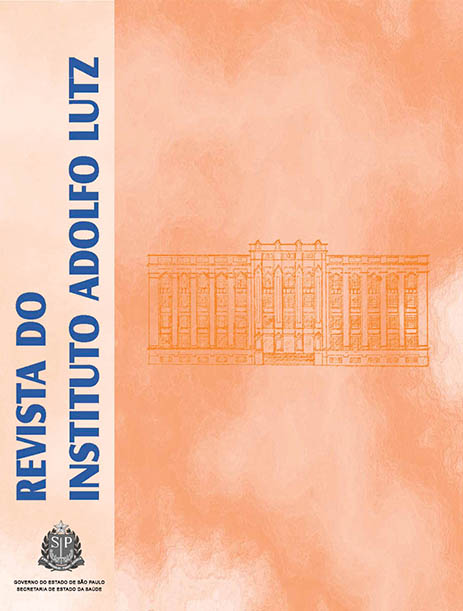Intestinal carriage of yeasts by children in hospitalar setting
Resumo
At the last decades the nosocomial infections causedby yeasts raised significantly especially by Candida yeasts.The infections source can be endogen or exogenous, sincespores of unicellular and multicellular are kept viable for monthsand several yeasts species are found in skin and mucosa ofhealthy people. In a saprophytic state yeasts are found in thehuman gastrointestinal tract but the relationship between the presence of these microorganisms and their pathology isassociated with several facts such as: number, variety of sitescolonized, effective use of antibiotics, associated infectionscaused by another microorganisms and mainly disturbance dueto lack of immunity and metabolic. Yeasts in the gastrointestinaltract can be transmitted fecal-oral direct or indirectly from anindividual to another. The transmission of a strain in a saprophytic state to a host can result in colony followed byinfection. The infection can be serious depending on the hostconditions and the etiologic agent that includes virulent factorand resistance to antifungal drugs. These attributes areimportant to Candida albicans in which enzymes withphospholipase activity are responsible for virulent factors.Resistance phenotypes, otherwise it should occur morefrequently in non-albicans species. Concerning the possibilityof an endogen disease and the spread of virulent and resistantstrains, from the gastrointestinal colony, studies that contributeto determine these agents that constitute the microbiota ofpatients, are important to know the natural story of nosocomialinfections caused by yeasts. This work aims at evaluating theintestinal tract as a source of hospital infections by yeastsdescribing the remaining species in the first hours and a possiblechange depending on the time that may happen to virulentphenotypic and resistance to ant fungi. Two hundred eightyone yeast samples from sixty-six children attended in pediatricand semi-intensive units in 2 public hospitals located in SãoPaulo and Guarulhos cities in Brazil were analyzed. The fecalsamples were collected at the first hours after and during theirarrival at the hospital. To identify the yeasts according to theirgender and species traditional methods were used, analyzingmorphological and physiological aspects. The ability to produceenzymes phospholipase and proteinase was verified the same way it was proposed by Price et al.1982 and Ruchel et al.1982.The sensibility to antifungals: amphotericin B (AMB),fluconazole (FZ), ketoconazole (CZ) e nistatin (NIS), was analyzedby the diffusion technical by disks (CECON São Paulo, Brazil).Resistant samples or with intermediate sensibility were confirmedby micro-dilution method according to NCCLS (1997) modifiedby EUCAST (2002). The isolated species were: Candidatropicalis (30%), C.parapsilosis (27%), C.krusei (4%),Trichosporon cutaneum e T.inkin (3%), Rhodotorulamucilaginosa e R.glutinis (2%), C.guilliermondii (2%),C.glabrata (1%) and C.kefyr (1%). Enzymatic activity wasverified in most of the 84 C.albicans samples being 96% ofphosfolipase and 95% of proteinase production. Among thenon-albicans species of Candida it was observed 97% ofphospholipase and 67% of proteinase activity. Less sensitivesamples to azoic drugs including resistant or SDD sensibility,which depends on the achieved dose, were found in 4.3% of the281 samples of yeast. The hugest percentage was observed inC.krusei (90%). We can conclude that different yeast speciesoccur in stools of pediatric population hospitalized, includingvirulent strains and antifungal resistant phenotypes. Thepersistent of these phenotypes in the intestinal tract duringhospitalization period may represents a risk factor contributingto endogen infection, or play a role in dissemination of potentialpathogens inside a nosocomial evironment.
Publicado
2004-12-30
Como Citar
C., T. (2004). Intestinal carriage of yeasts by children in hospitalar setting. Revista Do Instituto Adolfo Lutz, 63(1), 125-126. https://doi.org/10.18241/rial.v63i1.34829
Edição
Seção
RESUMOS DE TESES E DISSERTAÇÕES








